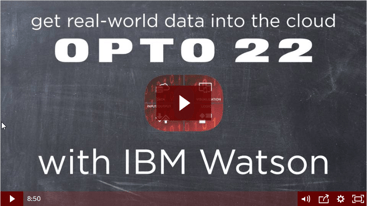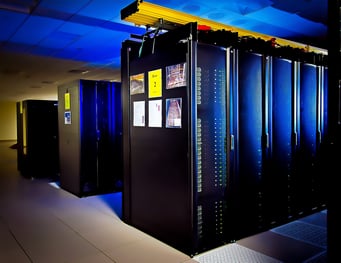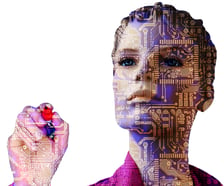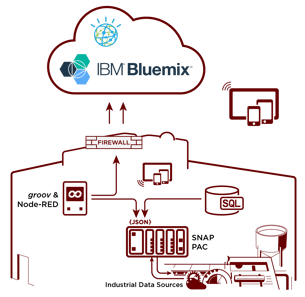T here’s a lot of talk these days about artificial intelligence, the cloud, and cognitive computing.
here’s a lot of talk these days about artificial intelligence, the cloud, and cognitive computing.
But what the heck do those things have to do with industrial automation, and why should automation professionals be getting up to speed on these technologies?
Simple answer: The data that these new technology resources need to consume to actually demonstrate some type of value is going to come from the industrial automation, process control, and manufacturing equipment that automation engineers, also known as operations technology professionals, work on every day.
But how will these information technologies like cognitive computing add value to industrial applications like manufacturing?
The website TechTarget.com defines cognitive computing as, ”The simulation of human thought processes in a computerized model. Cognitive computing involves self-learning systems that use data mining, pattern recognition and natural language processing to mimic the way the human brain works.”
 Cognitive computing systems, like the IBM Watson IoT Platform, use advanced machine learning algorithms to crunch massive volumes of data. Cognitive computing is what allows the Watson platform to actually learn from the data that’s fed into it.
Cognitive computing systems, like the IBM Watson IoT Platform, use advanced machine learning algorithms to crunch massive volumes of data. Cognitive computing is what allows the Watson platform to actually learn from the data that’s fed into it.
But once these super-smart computing systems get access to the data from our manufacturing systems, what are they going to do with it?
Once the data goes in, there are three key areas where cognitive computing systems, like Watson, can improve manufacturing applications:
- Adding intelligence to assets and equipment
- Improving process, quality, and operations efficiency
- Increasing manufacturing resource intelligence
Adding intelligence to assets and equipment
Once a piece of equipment is connected to a cognitive computing system and begins publishing its data for analysis, the computing system essentially begins to act as the equipment's cognitive brain.
Imagine adding a supercomputer to your manufacturing equipment. Now that supercomputer can tap into information from sensors attached to equipment and perform predictive analytics on things like motor or bearing failure.
The machine-learning algorithms in the cognitive computing system look for anomalies in system performance and behavior.
Say you add a sensor to a piece of equipment that monitors sound vibrations from a rotating shaft. If the sound vibrations suddenly range outside of what the cognitive computing system has determined the normal state to be, it can automatically alert operators before a complete part failure occurs that could destroy the entire machine.
At this point the equipment can literally schedule its own service call or even turn itself off before a catastrophic failure occurs. That's the power of edge computing.
 Improving process, quality, and operations efficiency
Improving process, quality, and operations efficiency
With systems connected to a cognitive computing application, vast numbers of process and control system variables can be analyzed against manufacturing performance and outcomes.
For example, the cognitive computing system can draw correlations between process variables like solder temperature and yield levels of a manufacturing run.
Systems like the IBM Watson IoT Platform can predict failure earlier than statistical process control and can mash up new data sources, like images and audio, to determine fault causes from non-traditional data sources.
Increasing manufacturing resource intelligence
Cognitive computing can make manufacturing resources more intelligent, from maintaining raw material quality to keeping people like line technicians and operators safer.
Tool availability and replacement part stock levels, for example, can be automatically tracked with sensors that feed information into cognitive computing systems.
 The real promise of cognitive computing is getting to data-driven outcomes that actually effect change. That means we'll have less trial and error and more application of actual data collected from the real world. This data, coming through sensors and systems, will identify and autonomously address a problem, maybe even before it happens.
The real promise of cognitive computing is getting to data-driven outcomes that actually effect change. That means we'll have less trial and error and more application of actual data collected from the real world. This data, coming through sensors and systems, will identify and autonomously address a problem, maybe even before it happens.
But how do we provide these advanced cognitive computing systems access to all of the data our manufacturing equipment is producing?
Right now the majority of the data that exists in the world—the data our cognitive computing systems want to access—is what's known as dark data.
Dark data is information that exists in the world today but is noisy or in a format that we can’t easily analyze, at least with our own brains. That’s where cognitive computing comes into play.
Cognitive computing can analyze huge volumes of data much faster than our brains can, and spot correlations and patterns that we might not ever be capable of identifying.
Which is important, because today there’s a lot of dark data out there. Every day about 2.5 quintillion bytes of new data are generated. Researchers at IBM estimate that about 80% of that data is dark.
An example of dark data could be data from a manufacturing system that’s controlled by a non-standard or proprietary control system that cognitive computing systems can’t easily tap into.
So how do we get our cognitive computing systems connected to the dark data of our manufacturing systems?
Learn more about how to connect data from your manufacturing system to cognitive computing systems like the IBM Watson IoT Platform in this Opto 22 IoT technology video.
